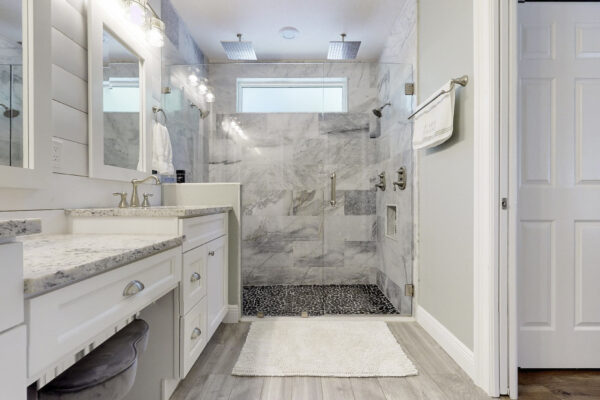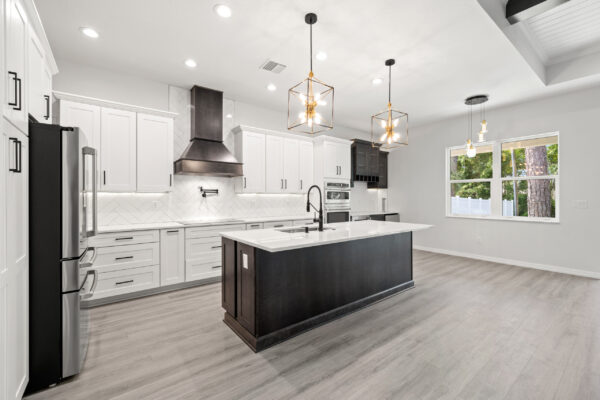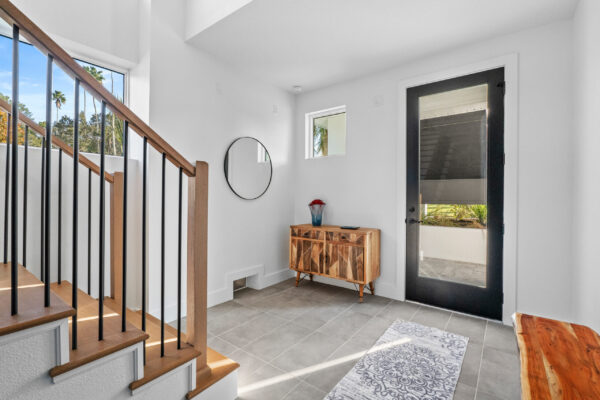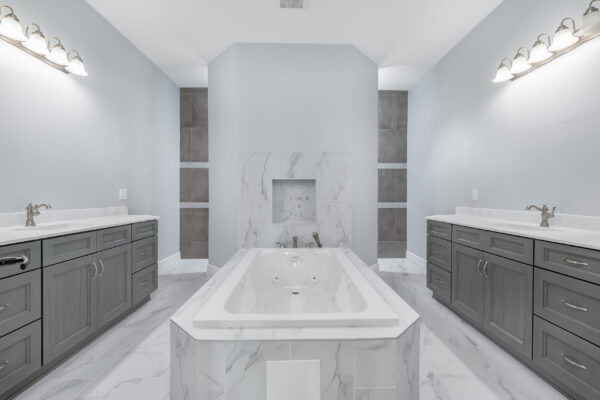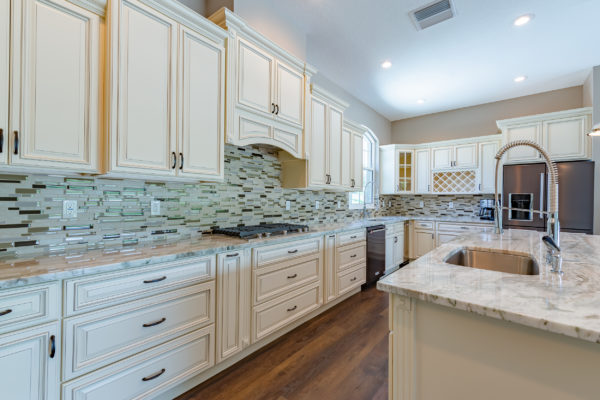Building a custom home is an exciting journey, but in today’s world, it’s also a time to think seriously about safety. From hurricanes and floods to wildfires and severe storms, natural disasters happen. Designing a home that can withstand these forces is not only smart; it’s an investment in your family’s security and your property’s long-term value.
At Covenant Homes, we specialize in building custom homes that blend beauty, comfort, and resilience. We’ll explore the key components of building a home that can stand strong in the face of nature’s challenges, and how you can get started with the right team of experts.
How to Choose Where to Build
One of the most important first steps in building a disaster-resistant home is choosing the right location. Your building site will largely dictate the types of natural threats your home may face, such as:
- Coastal areas: Higher risk for hurricanes, storm surge, and flooding
- Mountain regions: Higher risk for wildfires, landslides, and cold temperatures
- River valleys and low-lying areas: Increased flood risk
- Tornado-prone regions: Exposure to high winds and wind-driven debris
When selecting your lot, consider local building codes, FEMA flood zones, fire zones, and the historical track record of natural disasters in the region. An experienced builder like Covenant Homes can help you evaluate potential building sites for your new home
The Right Materials
The right materials lay the foundation for a disaster-resistant home. Here are some of the best options to consider:
- Concrete and Insulated Concrete Forms (ICFs): These materials provide exceptional strength, fire resistance, and energy efficiency.
- Framing: Pre engineered framing members including trusses and beams can provide additional strength and durability.
- Impact-Resistant Windows and Doors: Designed to withstand debris from hurricanes or tornadoes.
- Fiber Cement Siding: Combines aesthetic appeal with fire resistance and durability in extreme weather.
- Metal Roofing: Offers superior wind resistance and fire protection compared to traditional shingles.
At Covenant Homes, we work with clients to select materials that match both their design vision and performance goals helping to ensure your home is not only beautiful, but built to last.
Waterproofing and Drainage Systems
Water is one of the most destructive forces a home can face, and it’s not always visible. Designing for proper water management is critical:
- Site Grading: The building lot should be graded to direct water away from the foundation.
- French Drains and Swales: Underground systems that help manage runoff and groundwater.
- Sealed and Elevated Foundations: Reduce flood risk and water intrusion.
- Waterproof Membranes: Applied to foundations, walls, and roofing as an added barrier.
- Backflow Prevention Valves: Protect plumbing systems from sewer backup during floods.
These solutions work together to keep your home dry and safe, even in heavy storms or flood-prone areas.
Wind and Storm Protection
High winds from hurricanes, tornadoes, or severe storms can cause devastating damage. Wind-resistant design features include:
- Impact-resistant windows and doors: Rated to withstand flying debris and pressure changes.
- Reinforced garage doors: Prevent structural failure from wind entering large openings.
- Aerodynamic roof design: Hip roofs with multiple slopes perform better than gable roofs in high-wind areas.
- Roof anchoring: Enhanced tie-downs and connectors prevent roof uplift.
Covenant Homes incorporates these features to ensure your home is ready for the worst weather.
Emergency Preparedness for Your Family
Even with a well-built home, it’s important to plan for emergencies:
- Safe rooms: Reinforced rooms within the home can provide protection during tornadoes or severe storms.
- Backup power: Whole-home generators keep critical systems running during outages.
- Emergency supplies: Store food, water, first aid, and other essentials in an easily accessible location.
- Family emergency plan: Know evacuation routes and communication protocols.
We encourage all homeowners to create an emergency plan in case disaster happens.
Related: Checklist to Prepare Your Home For Hurricane Season
Insurance and Documentation Tips
Building a disaster-resistant home is one of the best ways to lower your risk, but having the right insurance coverage is still essential. You may want to consider some of the following options:
- Flood insurance
- Wind and hail coverage
- Wildfire coverage
- Home inventory photos and videos
- Construction documentation
Covenant Homes works closely with our clients to provide the documentation they’ll need to support both insurance needs and long-term peace of mind.
Regular Maintenance and Home Inspections
Even the best-built home requires ongoing care to maintain it. Here are a few tips to help you know how to maintain your custom built home.
- Annual Roof Inspections: Check for loose shingles, flashing damage, or debris buildup.
- Gutter and Drainage Maintenance: Ensure proper flow away from the home.
- Foundation Checks: Look for cracks, water intrusion, or signs of settling.
- Fire Mitigation: Regularly clear debris and manage vegetation around the home.
- Window and Door Inspections: Check seals, impact-resistance, and hardware.
Contact Covenant Homes for a Quote and Expert Guidance
If you’re considering building a custom home in North Georgia or the surrounding region, why not build it to be beautiful, functional, and resilient? At Covenant Homes, we specialize in helping families design homes that not only meet their lifestyle needs, but also stand strong against nature’s challenges.
We bring:
- Deep experience in building for the unique demands of the North Georgia region.
- Expert design guidance to incorporate disaster-resilient features from the ground up.
- Collaborative service to help you balance safety, aesthetics, and budget.
- Commitment to quality, transparency, and long-term client satisfaction.
Contact Covenant Homes today for a consultation and quote. We’d be honored to help you build a custom home that protects what matters most.
View Our Floor Plans



